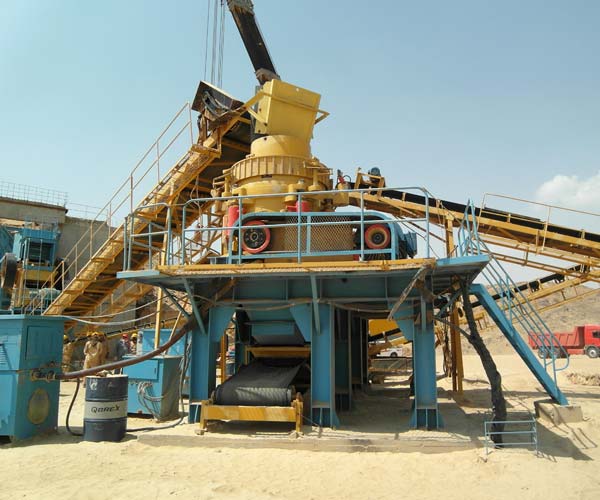
Cone crushers offer numerous advantages for secondary crushing applications, making them an essential tool for industries involved in mining, construction, and aggregate production. Their efficiency, versatility, and ability to produce high-quality aggregates with minimal further processing are some of the key reasons why cone crushers stand out from other types of secondary crushers like impact crushers and jaw crushers.
24 Online Service
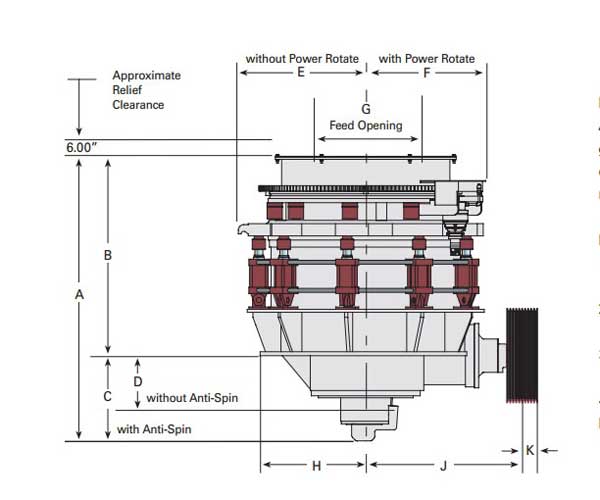
Cone crushers play a vital role in reducing large rocks into smaller particles. These versatile machines are widely used in the construction, mining, and quarrying sectors, enabling the production of finely crushed materials.
A cone crusher is a powerful machine used to crush hard and abrasive materials into smaller particles by utilizing a gyrating, funnel-shaped crushing chamber. This machine falls under the category of compression crushers, which means it uses squeezing and pressing forces to break the materials down. The name “cone crusher” is derived from its shape, as the crushing chamber resembles a cone, and the materials are crushed between a stationary and a movable mantle.
The primary function of a cone crusher is to break down large stones and rocks into smaller, more manageable pieces. It achieves this through a multi-stage process, consisting of compression, shearing, and attrition forces. The cone crusher operates on the principle of an eccentrically rotating spindle, which gyrates within the crushing chamber. The rock material is fed into the top of the cone crusher and gets compressed between the mantle and the concave (bowl liner) surfaces.
As the mantle gyrates, it creates a series of compression zones, where the rocks are squeezed and fractured. The broken particles then move downwards due to gravity and are subjected to shearing forces between the mantle and the concave. This process continues until the rocks are small enough to pass through the narrow gap at the bottom, where they exit the crusher as the final product.
The robust main frame of the cone crusher provides structural support and houses the various components. It is designed to withstand the intense pressures and stresses generated during the crushing process.
The mantle and concave are essential parts of the crushing chamber, creating the crushing action by their gyrating motion. These wear-resistant liners protect the main frame and aid in producing the desired particle size by controlling the discharge opening.
The eccentric assembly consists of a rotating eccentric shaft that drives the mantle’s gyrating motion. It is crucial in generating the necessary forces to crush the materials effectively.
The drive system, typically powered by an electric motor, transmits power to the eccentric assembly, enabling the cone crusher’s gyratory motion.
The crushing chamber is the space between the mantle and concave, where the rocks are compressed and crushed. The geometry of the chamber plays a vital role in determining the final product’s size and shape.
The adjustable discharge opening controls the size of the crushed material and affects the overall throughput of the crusher.
The feed hopper allows the material to be evenly fed into the crushing chamber, ensuring a steady and consistent supply of rocks for processing.
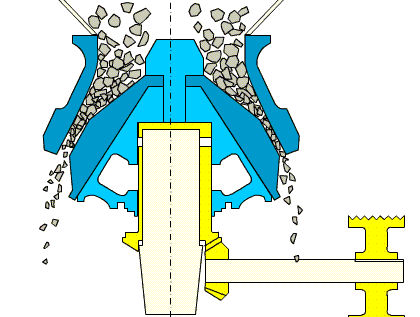
To understand the functioning of a cone crusher better, let’s walk through the operational steps:
Large rocks or ores are fed into the cone crusher through the feed hopper. The size of the material should be within the capacity of the crusher and compatible with its specifications.
Once the material enters the crushing chamber, it is exposed to the compressive forces exerted by the gyrating mantle and concave. The rocks get progressively crushed as they move downward and pass through different compression zones.
The crushed material exits the cone crusher through the adjustable discharge opening at the bottom of the crushing chamber. The size of the discharge opening can be adjusted to control the final product’s size.
The cone crusher can continuously process materials as long as there is a steady feed of raw material into the crushing chamber. This allows for high throughput and efficient operation.
Cone crushers are capable of processing a wide range of materials, including but not limited to:
Cone crushers excel at crushing hard and abrasive rocks such as granite, basalt, and quartzite. These materials pose a challenge for many other crushers due to their high compressive strength and abrasive nature.
Cone crushers are extensively used in the mining industry to crush various ores, including iron ore, copper ore, gold ore, and more.
Cone crushers are vital for the production of aggregates used in construction, such as gravel, sand, and crushed stone.
Cone crushers can process industrial minerals like limestone, gypsum, and dolomite.
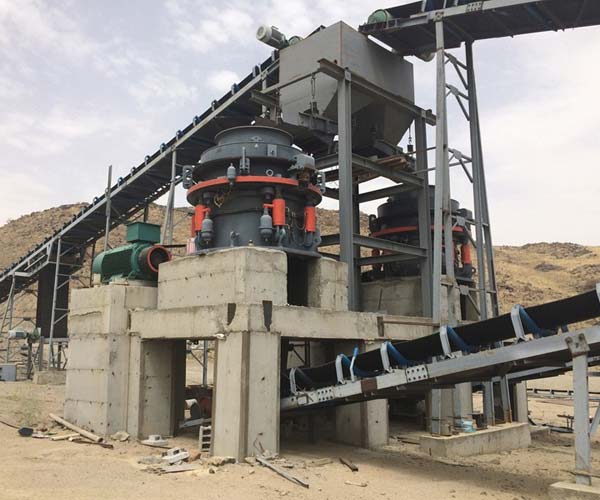
Cone crushers are versatile machines that have been widely used in the mining and construction industries for decades. Their effectiveness in secondary crushing applications has made them a popular choice for many operations.
Cone crushers are designed to efficiently crush hard and abrasive materials. Their unique design allows for a higher reduction ratio, resulting in a more refined and cubical end product. The bowl-shaped crushing chamber and gyrating mantle ensure a continuous and even crushing process, leading to higher throughput and improved productivity.
Cone crushers can handle a wide range of materials, from hard and abrasive rocks to soft and non-abrasive ores. This versatility makes them suitable for various secondary crushing applications across different industries, including mining, quarrying, construction, and recycling.
Cone crushers are known for their robust construction and minimal wear, making them durable and reliable. Additionally, routine maintenance tasks such as changing liners and inspecting components are straightforward, reducing downtime and optimizing operational efficiency.
Cone crushers produce well-graded, cubical, and finely crushed particles, enhancing the quality of the final product. This uniform particle shape is highly desirable for producing high-quality aggregates, as it improves the workability and strength of concrete and asphalt mixes.
While the initial investment in a cone crusher might be higher than other types of crushers, its efficiency and long-term benefits make it a cost-effective choice in the long run. The reduction in further processing and improved aggregate quality help save costs and enhance overall profitability.
Impact crushers, also known as horizontal shaft impactors (HSI), offer an advantage in primary crushing applications due to their high capacity and ability to handle large feed sizes. However, when it comes to secondary crushing, cone crushers have several advantages over impact crushers.
As mentioned earlier, cone crushers produce more cubical and well-graded particles compared to the typically flatter and elongated particles produced by impact crushers. The better particle shape leads to higher-quality aggregates and better workability of construction materials.
Cone crushers generally have lower wear costs than impact crushers, particularly when processing hard and abrasive materials. The reduction in wear parts replacement and maintenance expenses adds to their cost-effectiveness.
Cone crushers offer a higher reduction ratio, which means they can efficiently crush smaller-sized aggregates to produce a more refined product. Impact crushers, on the other hand, tend to have a lower reduction ratio and may require secondary or tertiary crushers for further processing.
Jaw crushers are commonly used in primary crushing applications, and while they are capable of handling large feed sizes, they are not as efficient in secondary crushing as cone crushers. Here are some key advantages of cone crushers over jaw crushers for secondary crushing.
Cone crushers are designed for secondary crushing and are capable of reducing large-sized materials into smaller, more manageable particles. Jaw crushers, primarily used in primary crushing, are not well-suited for secondary crushing tasks.
Cone crushers produce a more consistent product size distribution compared to jaw crushers, which tend to produce more variable sizes. This uniformity is crucial for producing high-quality aggregates, especially in the construction industry.
Cone crushers use compression crushing, while jaw crushers use impact crushing. The compressive force applied by cone crushers results in a more efficient reduction of materials and minimizes the generation of unwanted fines.
Cone crushers play a vital role in the production of high-quality aggregates for various applications, including road construction, concrete production, and railway ba
The cubical and well-graded particles produced by cone crushers enhance the workability, strength, and durability of concrete and asphalt mixes. These high-quality aggregates contribute to the overall performance and longevity of construction projects.
The excellent particle shape achieved by cone crushers reduces the need for additional processing steps, such as screening and washing. As a result, less material is wasted, and the production process becomes more efficient and cost-effective.
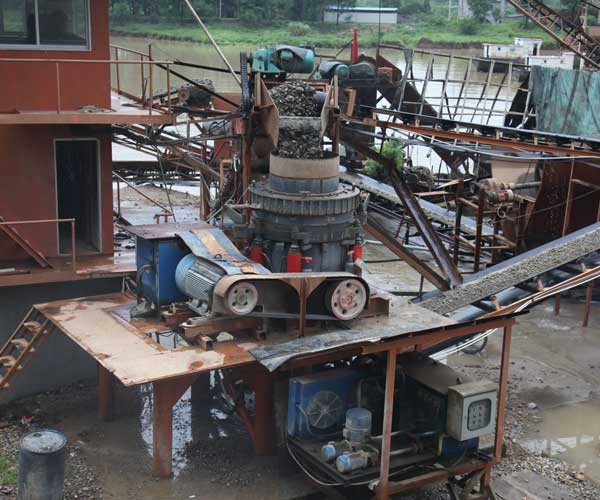
Cone crushers are essential equipment in the mining, construction, and aggregate industries, as they are used to break down hard and abrasive materials into smaller, more manageable sizes. Over the years, various types of cone crushers have been developed to cater to diverse application requirements.
Spring cone crushers, also known as traditional cone crushers, have been around for several decades and remain a popular choice for many applications. They work on the principle of compression crushing, where the material is compressed between the mantle and the concave. The spring system plays a crucial role in their operation by providing the necessary force for crushing.
With advancements in technology, hydraulic cone crushers have gained popularity due to their enhanced performance and automation capabilities. These crushers use hydraulic systems to facilitate the crushing process, offering improved efficiency and precision.
If you are interested in Zenith cone Crusher Sale, you can contact us for more information about the selection, the price and other details of the equipment. The engineers will introduce the machines in detail for you.
Our Projects
Copyright © ZENITH, All Right Reserved.
